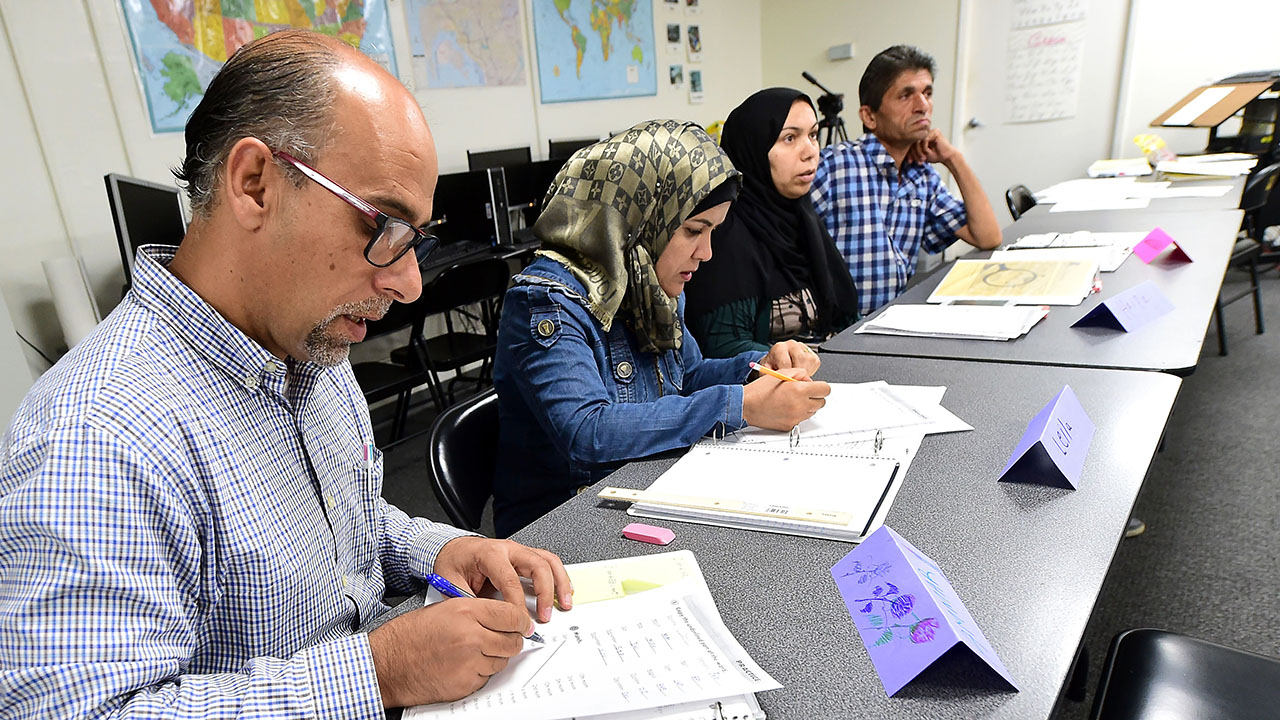
The United States plans to admit a maximum of 18,000 refugees in fiscal year 2020, down from a cap of 30,000 in the one that ended Sept. 30, 2019, under a new refugee admissions ceiling set by the Trump administration. This would be the lowest number of refugees resettled by the U.S. in a single year since 1980, when Congress created the nation’s refugee resettlement program.
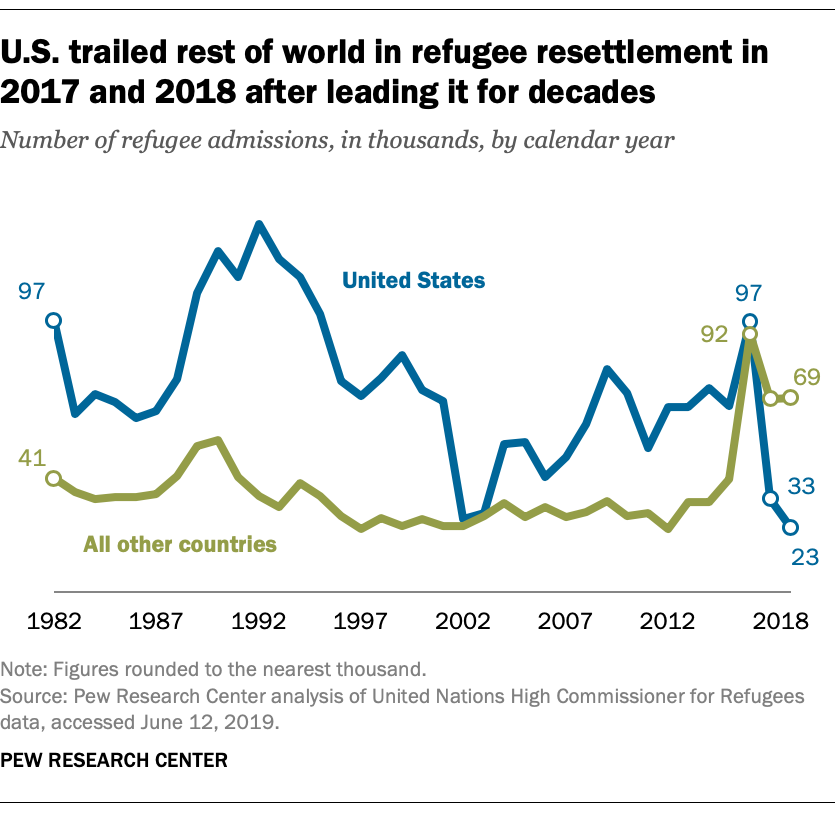
Even before the administration’s announcement, refugee resettlement in the U.S. had dropped to historic lows during Donald Trump’s presidency, according to a Pew Research Center analysis of State Department data. As a result, the U.S. is no longer the world’s top country for refugee admissions. It had previously led the world on this measure for decades, admitting more refugees each year than all other countries combined.
The decline in U.S. refugee admissions comes at a time when the number of refugees worldwide has reached the highest levels since World War II.
Here are key facts from our research about refugees entering the United States:
The refugee approval process for resettlement in the United States can take several months or years while security checks and other screenings are completed.
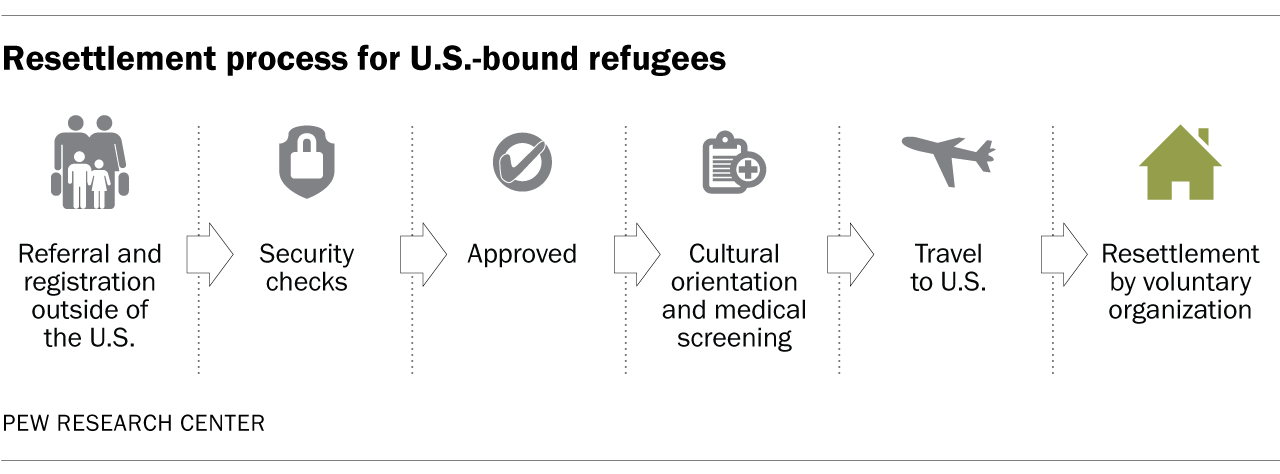
Refugee applicants are referred to U.S. officials by the United Nations High Commissioner for Refugees, U.S. embassies and nongovernmental organizations. Resettlement candidates first apply for refugee status while in another country and do not enter the U.S. until they have legal permission to do so. (Asylum seekers, by contrast, are people who migrate and cross a border without first having received legal permission to enter their destination country.) While awaiting resettlement, refugees undergo health screenings and cultural orientations before entering the U.S.
The International Organization for Migration and U.S. Office of Refugee Resettlement work with U.S.-based voluntary agencies such as the International Rescue Committee or Church World Service to resettle refugees within the United States. With offices across the nation, these agencies help resettle refugees across many states.
Once resettled, refugees learn English and acquire job skills with help from local nonprofits like ethnic associations and church-based groups. After several months, financial assistance from federal agencies stops and refugees are expected to become financially self-sufficient. Most refugee households have someone who finds employment shortly after resettlement. U.S. refugees are granted permanent residency within a year of arrival and can apply for U.S. citizenship five years later.
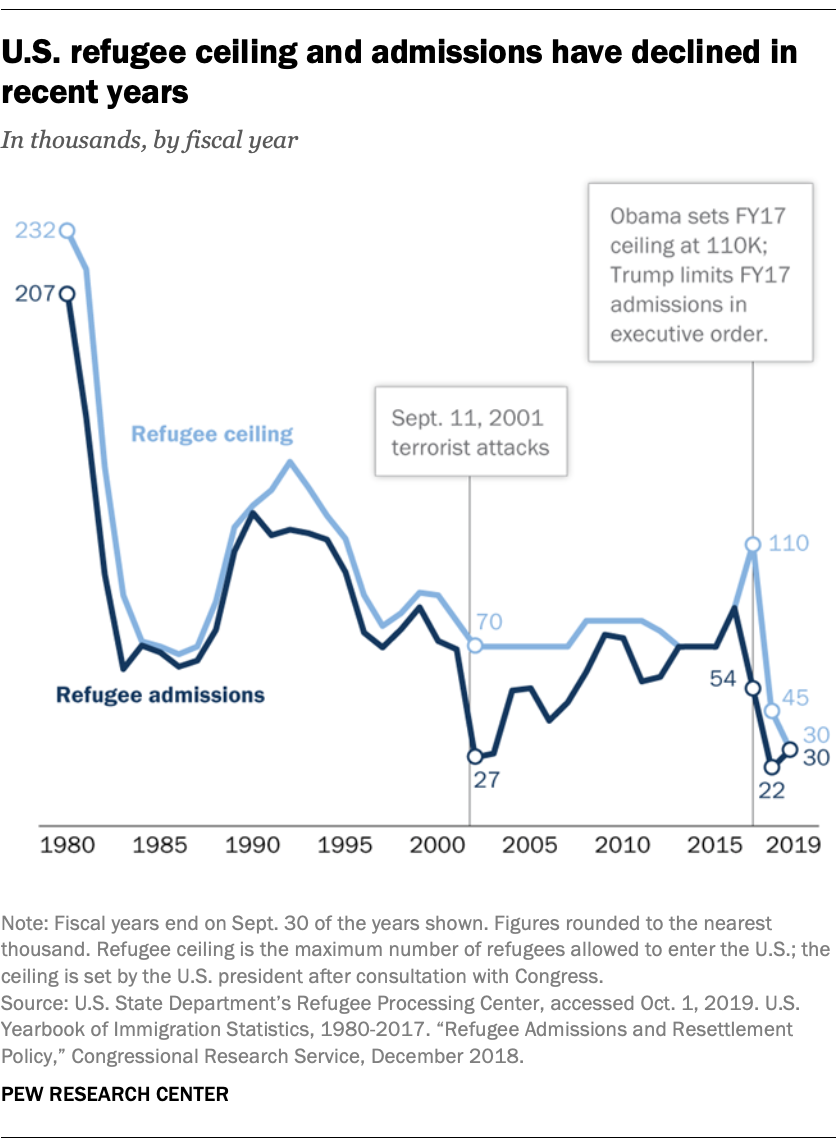
Refugee admissions into the U.S. have declined substantially during Donald Trump’s presidency. Every fall, the U.S. president sets a refugee ceiling – the maximum number of refugees who may enter the country in a fiscal year. In fiscal 2017 (Oct. 1, 2016, to Sept. 30, 2017), about 53,700 refugees resettled in the U.S. – a figure that reflects a temporary freeze on refugee admissions that Trump ordered shortly after taking office. The following year, Trump’s first full fiscal year in office, he set the nation’s refugee ceiling at 45,000, a new low at the time, and the U.S. ultimately admitted about 22,500. Trump then set the refugee ceiling at 30,000 for the fiscal year that ended Sept. 30, 2019, and refugee admissions reached this cap. For fiscal 2020, which started Oct. 1, 2019, Trump has set a ceiling of 18,000 refugees.
Overall, the U.S. has admitted about 76,200 refugees so far under the Trump administration (Jan. 20, 2017, to Sept. 30, 2019). By comparison, the U.S. admitted nearly 85,000 refugees in fiscal 2016 alone, the last full fiscal year of the Obama administration.
Historically, the total number of refugees coming to the U.S. has fluctuated with global events and U.S. priorities. From fiscal years 1990 to 1995, an average of about 116,000 refugees arrived in the U.S. each year, with many coming from the former Soviet Union. However, refugee admissions dropped off to roughly 27,100 in fiscal 2002, a new low at the time, after the U.S. largely suspended admissions following the Sept. 11 terrorist attacks. Refugee admissions rebounded from this low point. From fiscal 2008 to 2017, an average of about 67,100 refugees arrived each year. Half or more of refugees during this time came from Asia, with many from Iraq and Burma (Myanmar). (Iraq is counted as a part of Asia in this data source.) Since fiscal 1980, 55% of refugees have come from Asia, a far higher share than from Europe (28%), Africa (13%) or Latin America (4%).
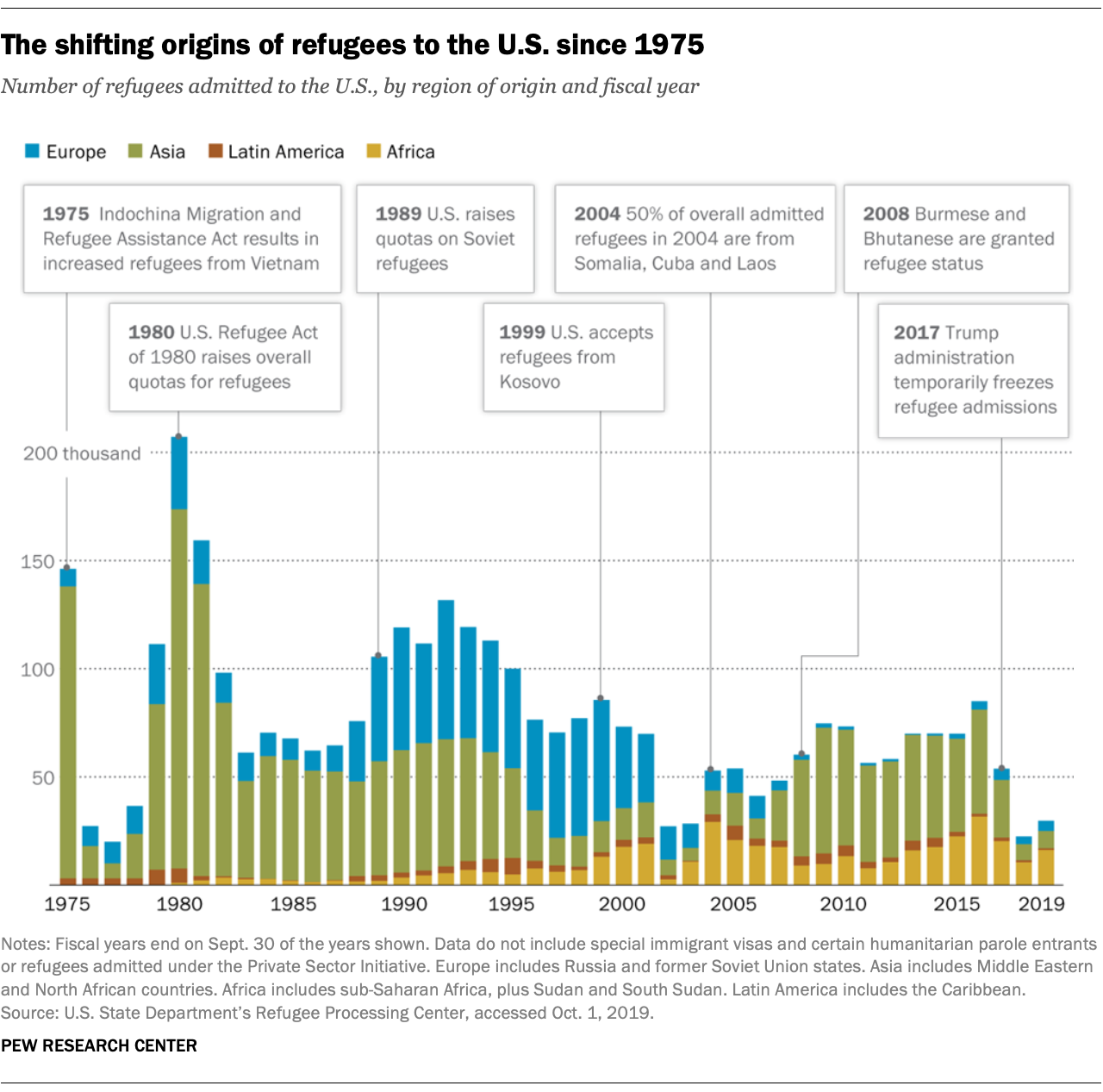
Refugees from the Democratic Republic of Congo far outnumbered those from other countries in fiscal 2019. D.R. Congo accounted for nearly 13,000 refugees, followed by Burma (Myanmar) with about 4,900, then Ukraine (4,500), Eritrea (1,800) and Afghanistan (1,200). The picture looks different over the longer term. Since fiscal 2002 (Oct. 1, 2001, to Sept. 30, 2019), the most refugees have come from Burma (about 177,700), Iraq (144,400) and Somalia (104,100).
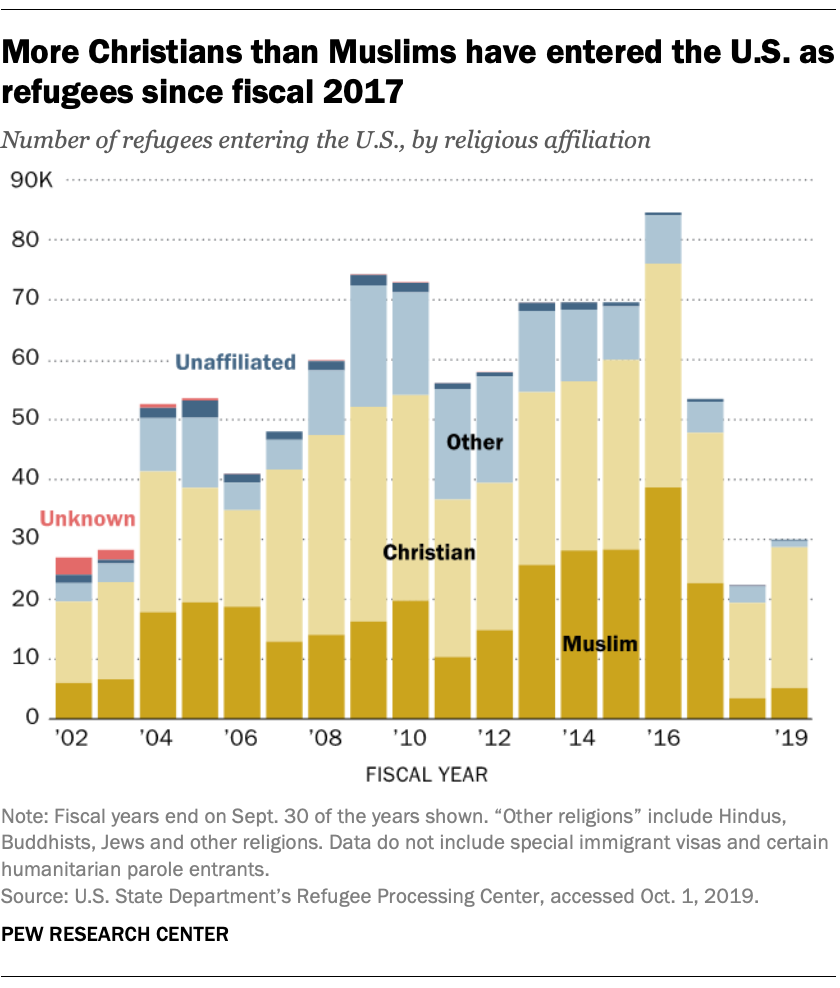
The U.S. has admitted far more Christian refugees than Muslim refugees in recent years. Christians accounted for 79% of refugees who came to the U.S. in fiscal 2019. The U.S. admitted about 23,800 Christians, compared with about 4,900 Muslims and smaller numbers of other religious groups.
This pattern marks a sharp reversal from several years ago. In fiscal 2016, the number of Muslim refugees admitted reached 38,900, a historic high that narrowly outpaced Christian refugee admissions (about 37,500). That year, Muslims accounted for 46% of the year’s refugees, the highest share since fiscal 2006.
Since fiscal 2002 (Oct. 1, 2001, to Sept. 30, 2019), the U.S. has admitted about 464,700 Christian refugees and about 310,700 Muslim refugees.
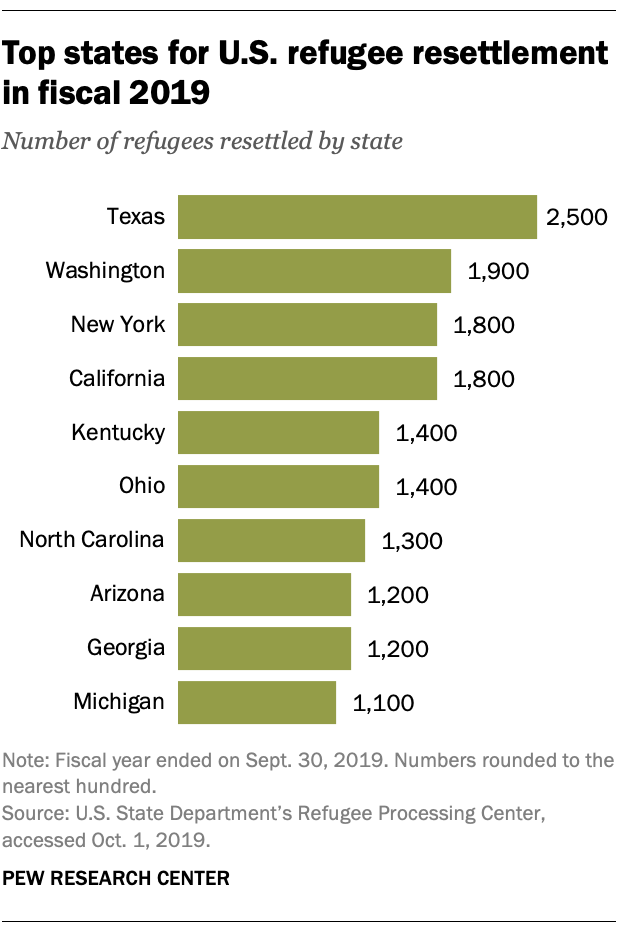
Texas, Washington, New York and California resettled roughly a quarter of all refugees in fiscal 2019. Together, these states took in nearly 8,100 refugees. Other states that received at least 1,000 refugees include Kentucky, Ohio, North Carolina, Arizona, Georgia and Michigan. By contrast, the District of Columbia, Delaware and West Virginia each resettled fewer than 10 refugees. Hawaii and Wyoming took in no refugees in fiscal 2019.
Since fiscal 2002, California has resettled the most refugees (about 108,600), followed by Texas (88,300), New York (58,500) and Florida (48,700).
Americans have been divided in recent years over whether the U.S. should accept refugees, with large differences by political party affiliation. In a May 2018 survey, for example, about half of Americans (51%) said the U.S. has a responsibility to accept refugees into the country, while 43% said it does not. Around three-quarters of Democrats and Democratic-leaning independents (74%) said the U.S. has this responsibility, compared with 26% of Republicans and Republican leaners. For much of the 20th century, U.S. public opinion polls showed fairly consistent disapproval of admitting large numbers of foreigners fleeing war and oppression, regardless of official government policy.
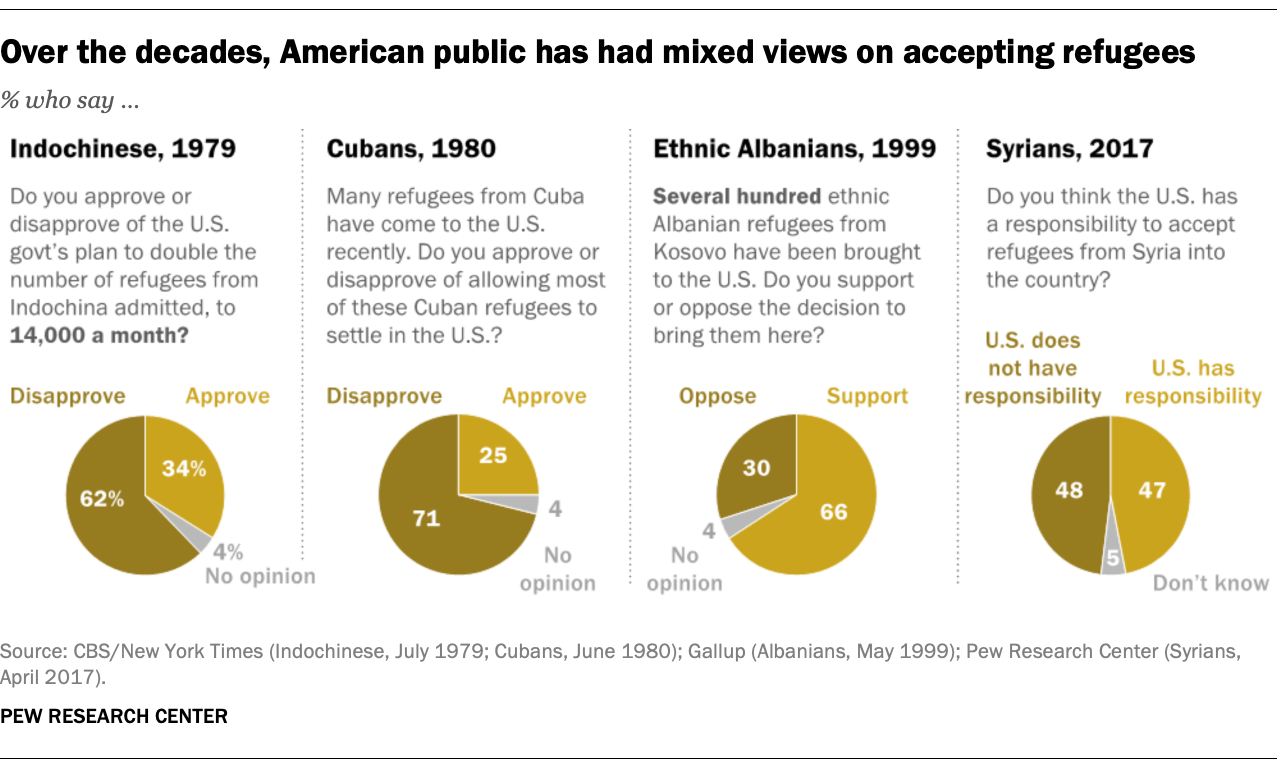
Note: This is an update of a post originally published on Jan. 27, 2017, and co-authored by Jynnah Radford, a former research assistant at Pew Research Center.
